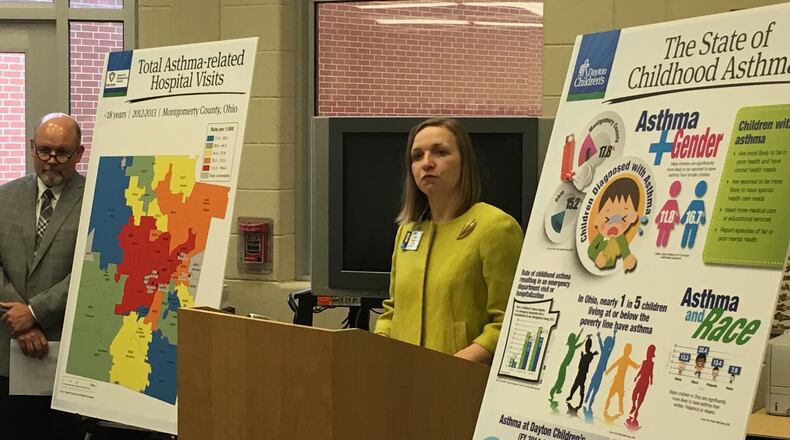And now it’s at risk for elimination — a fact which alarms public health officials in the state. Under a bill that passed two House committees last week, the fund would be eliminated beginning in October of next year. The bill does not propose a replacement.
“It’s actually terrifying,” said Jose Rodriguez, a spokesman for Columbus Public Health. He said some 34 percent of the department’s funding comes from federal dollars.
Rodriguez said Ohio already lags behind other states in funding. “One of the reasons we have challenges with health outcomes is because we don’t invest the same amount other states do,” he said, adding “any time you get a cut, it could have an impact.”
Adding to those fears are worries that President Donald Trump’s upcoming budget will pare away at public health funds. Trump’s budget, which will be released Thursday, includes cuts to discretionary programs but additional money for defense programs.
Taken together, the budget cuts would have a huge impact on public health programs, which aim not only to prevent disease but to respond to outbreaks, such as the recent Zika virus and the Ebola virus.
The Prevention and Public Health Fund accounts for about $1 billion a year, with $625 million of that spread among the 50 states and the District of Columbia. It’s been criticized by some conservatives as a “slush fund” that has been used for items such as helping a county in California ban new fast food restaurants or building community gardens and jungle gyms.
But a CDC chart on the distribution of the dollars reflects more meaty public health issues: The fund, it says, paid out $72 million in grants for diabetes prevention; $14.7 million for Alzheimer’s Disease, Prevention Education and Outreach; $324 million to increase access to immunization and $17 million for lead poisoning prevention.
Rich Hamburg, executive vice president and chief operating officer for the Trust for America’s Health, said the sweeping nature of the cuts will likely mean other resources get shifted, meaning even programs not under the umbrella of the prevention fund will get hit.
“This is not a good thing, any way you look at it,” he said.
According to the Ohio Department of Health, the state received $22.9 million in fiscal year 2016. Of that, $7 million went for prevention block grants, $5.9 million toward immunization and $406, 472 toward childhood lead poisoning. Children’s Hospital in Cincinnati received $1.9 million for immunization programs and $725,038 went toward a tobacco cessation program.
Rodriguez said any cuts will hurt.
According to a 2015 report by the Trust for America’s Health, Ohio ranked 42nd in state investment in public health in fiscal year 2013 and 2014, paying $14.59 per capita while the national average was $31.06.
When funding is cut, health needs spike, Rodriguez said.
“Any time you eliminate prevention or lower dollars in prevention, you have a higher incidence of disease,” he said. “And we are submerged in challenges.”
Amy Bush Stevens, vice president of prevention and public health policy at the Health Policy Institute of Ohio said that prevention ‘is an area where we struggle.” The state ranks 46th nationally in the institute’s latest “Health Value Dashboard,” which ranks states on a combination of public health and health spending metrics. Among the state’s biggest problems, the report found, was its high smoking rate.
Ohio performs poorly on public health and prevention overall, ranking 50th out of 51 states and the District of Columbia, according to the institute’s dashboard. Its ranking for health value was 46th, which the group says means Ohioans are living less healthy lives and spending more on health care than people in most other states
From the Statehouse to the White House, our political reporters scour their beats for stories that impact you. For the latest in politics, like our Ohio Politics Facebook page and follow our team at @Ohio_Politics on Twitter.
About the Author
